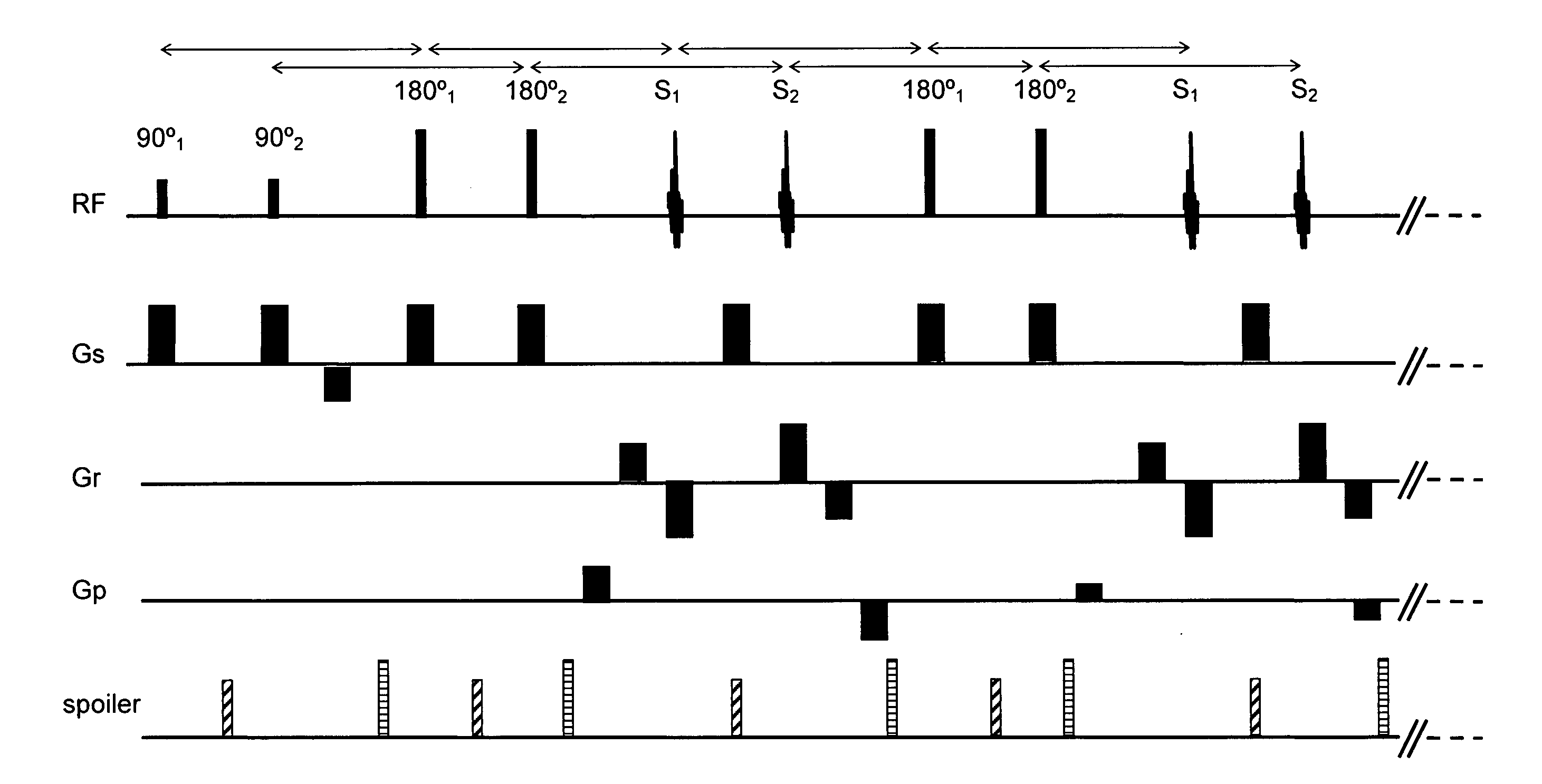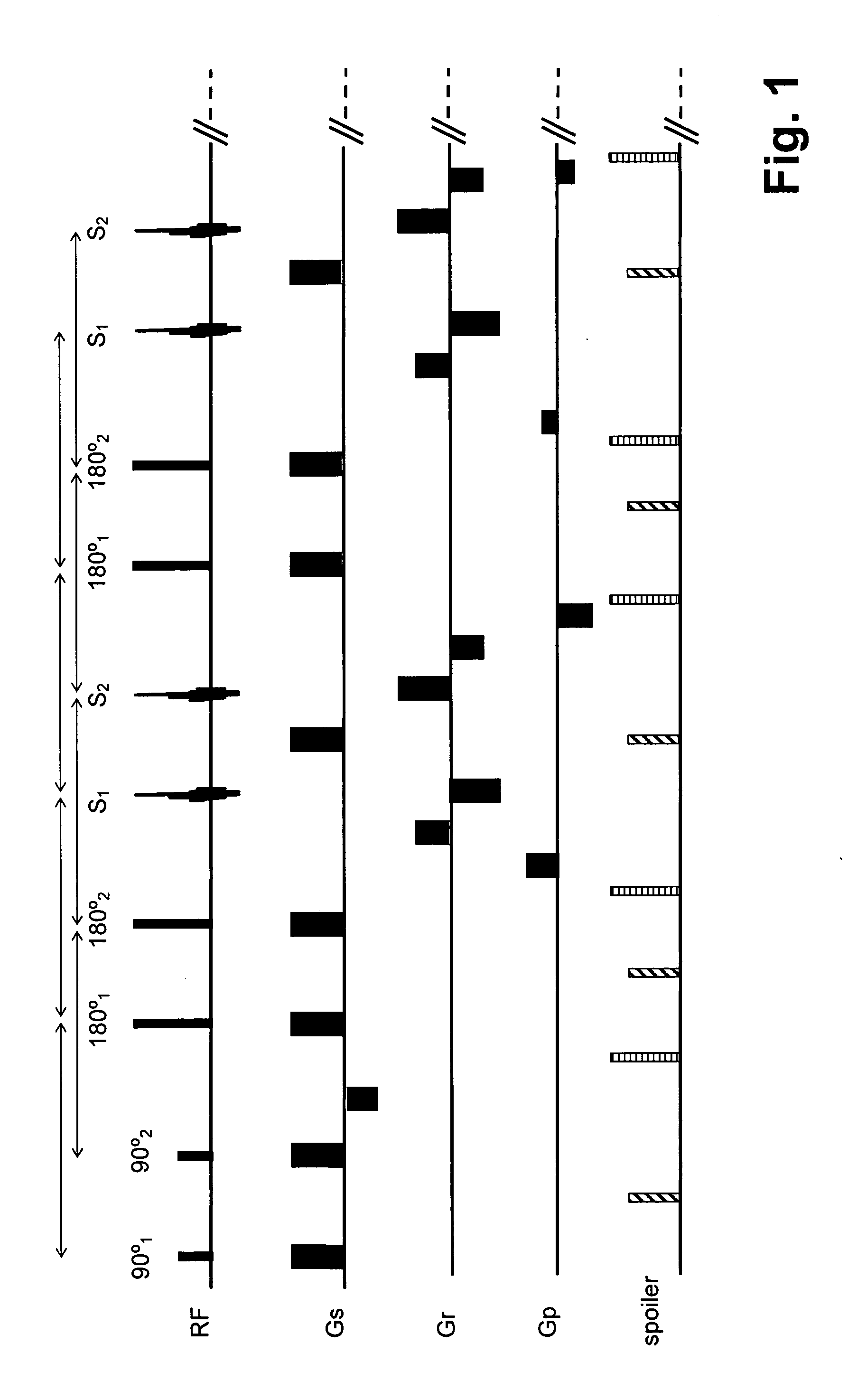Simultaneous excitation and acquisition of signal from multiple slices in the RARE sequence (multiplex RARE)
a rare sequence and simultaneous excitation technology, applied in the field of rare magnetic resonance imaging, can solve the problems of unsatisfactory cpmg conditions and relatively long acquisition tim
- Summary
- Abstract
- Description
- Claims
- Application Information
AI Technical Summary
Benefits of technology
Problems solved by technology
Method used
Image
Examples
Embodiment Construction
[0031]The main ideas are illustrated in FIG. 1, which shows an implementation of the novel sequence for two slices. The subscripts refer to the slice number corresponding to the 90°, 180° and spin-echoes (S). On the slice gradient channel (Gs), all solid rectangles above the line are equal in area. Note that they have multiple purposes. For example, a solid rectangle acting as the slice selection gradient lobe for one slice also acts simultaneously as spoiler for the other slices, and so on. The solid rectangle below the line serves to refocus the excitation in all slices and is approximately half the area of a solid rectangle above the line. All diagonally shaded rectangles have the same area, and provide optional additional dephasing between slices. All horizontally shaded rectangles have the same area, and provide spoiling of fids generated by imperfect refocusing pulses. These dephasing spoiler lobes may be added to the slice, phase encoding, or frequency encoding channels witho...
PUM
 Login to View More
Login to View More Abstract
Description
Claims
Application Information
 Login to View More
Login to View More - R&D
- Intellectual Property
- Life Sciences
- Materials
- Tech Scout
- Unparalleled Data Quality
- Higher Quality Content
- 60% Fewer Hallucinations
Browse by: Latest US Patents, China's latest patents, Technical Efficacy Thesaurus, Application Domain, Technology Topic, Popular Technical Reports.
© 2025 PatSnap. All rights reserved.Legal|Privacy policy|Modern Slavery Act Transparency Statement|Sitemap|About US| Contact US: help@patsnap.com



